Contents

Enterobiasis in children is a parasitic invasion of the intestine, which is provoked by pinworms belonging to the species of roundworms. The disease in childhood has a fairly pronounced symptomatology and is manifested by severe perianal itching, abdominal cramps, loss of appetite, allergic reactions, delayed physical development and other signs.
Enterobiasis is the most common parasitic invasion that is diagnosed in childhood. It accounts for 91% of all registered cases of parasitic diseases. Statistics indicate that enterobiasis is present in 20% of preschoolers and 50-90% of schoolchildren. This helminthic invasion is widespread throughout the world. It should not be taken lightly, since it has been scientifically proven that enterobiosis leads to the formation of a large number of somatic diseases in children and contributes to the exacerbation of chronic pathologies.
Causes of enterobiasis in children
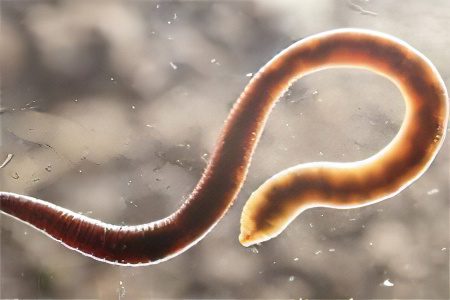
Enterobiasis in children is provoked by pinworms. These are small roundworms that have one host – a person. Male pinworms are small, their body length does not exceed 3 mm. Females are larger, they can reach a length of 10 mm. The worms are white in color and have an elongated body with a pointed end.
Adult individuals are attached to the small and large intestines of the child, for this they have special vesicles located on the head. Worms of both sexes are needed for fertilization. When the eggs mature inside the body of the female, she moves into the lower sections of the large intestine, overcomes the resistance of the sphincter and crawls out. In the perianal folds, the female lays her eggs in groups and then dies.
During the movement of the worm in the perianal region, the patient experiences itching. He begins to comb his anus, as a result of which the eggs attach to his hands, get under his nails and spread to surrounding household items, clothes, skin, etc.
If the eggs enter the mouth, they travel down the esophagus to the stomach and intestines, where, under the action of digestive enzymes, their shell is destroyed. A larva emerges from the egg, which reaches puberty in the intestine and the cycle of helminth development is repeated again.
Each individual can exist in the body of a child for up to 2 months, after which the worm dies of natural old age. Up to several thousand helminths can simultaneously parasitize in the intestine.
Once the eggs have been laid in the perianal area, they take 4 to 6 hours to become infective. When a child swallows such eggs, he becomes infected with enterobiasis. Outside the human body, eggs remain viable for up to 25 days.
Thus, the mechanism of transmission of enterobiosis is fecal-oral, and this mechanism is realized by food and household routes. Children with enterobiasis pose a danger not only to themselves, but also to those around them, as they are sources of the spread of the disease.
The following factors contribute to the transmission of infection:
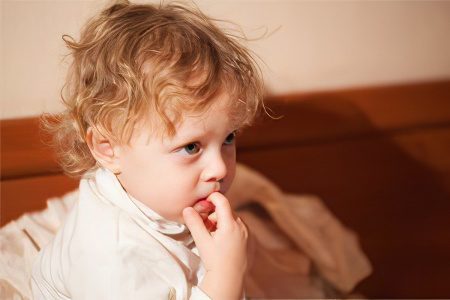
The child’s habit of licking and sucking his fingers, putting various objects into his mouth. Often this happens when the baby is passionate about something.
Nail biting habit.
Low level of hygiene skills. It is important from childhood to teach a child to wash their hands after going to the toilet, after visiting public places, before every meal.
Often, infection occurs during the change of milk teeth to molars. The teeth begin to loosen, and so the child puts his hands in his mouth to touch them.
Use of personal hygiene items that do not belong to the child. This is especially true for kindergartens.
Poor sanitary conditions in which the child lives, the presence of insects in the house. It has been established that eggs that cause enterobiasis in children are able to carry cockroaches and flies on their paws. In addition, they can be in the dust for almost a month without losing viability.
Infection can occur in circles, children’s clubs, swimming pools and other organized institutions.
Symptoms of enterobiasis in children

Symptoms of enterobiasis in children are directly related to how massive the helminthic invasion is and how long it lasts. Equally important is the age of the child and the individual characteristics of his body.
In general, the clinical picture of enterobiasis in children is as follows:
Severe anal itching. It intensifies in the evening and gains its maximum at night. Itching is a consequence of worm migration, when the female helminth descends into the rectum and crawls out through the sphincter in order to lay eggs. Itching haunts the child for no more than three days, after which it subsides. However, a month later, the unpleasant symptoms return as the next offspring of worms begin to migrate.
The more worms parasitize in the intestines of the child, the stronger the anal itching will be. In such cases, it can haunt the child on an ongoing basis, and will not subside even during the day.
The child’s sleep is disturbed, he becomes more restless. Female helminths can irritate not only the perianal region, but also the external genitalia. This leads to early masturbation of the child, to bedwetting.
The perianal area is hyperemic, there is local irritation, traces of scratching are visible. With prolonged invasion, the child develops eczema or dermatitis.
Bruxism, namely grinding teeth at night, is another indirect sign of enterobiasis. Although scientists have not yet found scientific confirmation of helminth bruxism, in most cases, checking a child who grinds his teeth in his sleep for parasitic infestation reveals its presence.
The vast majority of children with enterobiasis indicate recurrent abdominal pain. They are localized in the iliac region or in the region of the appendix. Pain can be mild and intense enough, such that competent differentiation of enterobiosis from a disease requiring surgical intervention is necessary. In addition, parasites are really capable of provoking acute appendicitis in a child if they penetrate the appendix.
The child’s appetite suffers, it worsens, as a result of which the patient begins to lose weight.
The stool with enterobiasis is almost always unstable, constipation alternates with diarrhea. In parallel, there is bloating, flatulence, false urge to empty the intestines.
Metabolic disorders, pathological vital activity of worms, their use of nutrients from food for their own needs – all this leads to a delay in the physical growth and development of the child, to the formation of beriberi and iron deficiency anemia.
A characteristic companion of enterobiasis in children are allergic reactions. They proceed according to the type of atopic dermatitis, conjunctivitis of an allergic nature. More serious manifestations of allergies are also possible, including Quincke’s edema and bronchial asthma. When getting rid of parasites, it is far from always possible to get rid of the health problems caused by the products of their vital activity. It was found that allergic syndrome accompanies enterobiasis in children in 71,3% of cases.
The normal intestinal microflora is disturbed, which eventually leads to the development of dysbacteriosis.
It has been proven that intestinal infections in children with helminthic invasions are much more difficult and longer than their healthy peers. The longer the mechanical irritation of the intestinal wall by worms is observed, the stronger the inflammation of the intestine, the more infiltrates, erosions, petechial hemorrhages, granulomas appear in it. As a result, such children are observed by a gastroenterologist for enteritis, gastritis, gastroduodenitis.
Enterobiasis leads to suppression of the immune system, the child often gets sick, viral infections take longer and more severely. It has been proven that parasites have an impact on the formation of post-vaccination immunity. Immunological deficiency contributes to the fact that children are classified as frequently ill.
Extensive manifestations of the nervous system. Children with parasitic infestation are more irritable, emotionally unstable. They are prone to headaches, get tired faster during classes, which affects school performance. Cognitive processes worsen, ZPR is observed.
Nausea, abdominal cramps, indigestion – all these symptoms are not associated with food intake and occur even with a rational and adequate diet.
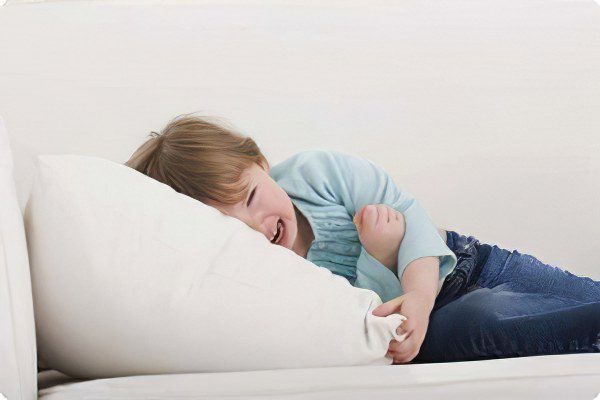
Diagnosis of enterobiasis in children

Diagnosis of enterobiasis in children, as a rule, is not difficult. Attentive parents can independently notice the itching of the child that disturbs at night, and sometimes see pinworms on the skin around the anus, or in its feces.
The leading method for detecting parasitic invasion in children is scraping for enterobiasis. It is performed using adhesive tape or a cotton swab. Scraping is taken in the morning from the perianal folds of the child before washing and before changing underwear.
So that efforts are not in vain, it should be borne in mind that pinworm eggs are laid with a certain frequency. Therefore, a single or double scraping for enterobiasis is uninformative. It must be performed 3-4 times with an interval of 2-3 days.
Indirect laboratory signs of enterobiasis can be such blood parameters as: eosinophilia, basophilia, anemia.
The doctor should suspect enterobiasis in a child by allergic, asthenic and abdominal symptoms, which are present on an ongoing basis. Therefore, it is so important to take into account the indirect signs of enterobiasis and be persistent in the diagnosis of invasion.
Treatment of enterobiasis in children
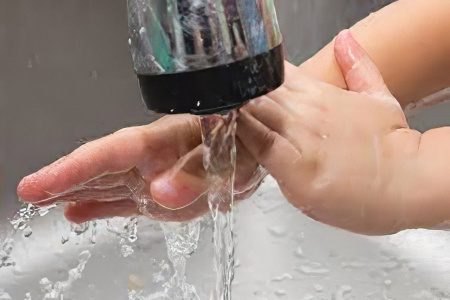
Treatment of enterobiasis in children begins with the administration of specific anthelmintic drugs. Modern medicine has several drugs used to treat intestinal parasites of this type. They can be used both for the treatment of already identified patients, and for the prevention of enterobiasis among people at risk.
Before starting therapy, it should be taken into account that a prerequisite for the successful treatment of enterobiosis is the involvement in this process of all family members and the team in which the child is constantly present. In addition, it is important to observe strict hygiene rules during therapy to avoid reinvasion.
These conditions include:
Daily wet cleaning. There is evidence that pinworm eggs can exist in dust particles that are at a height of 1,5 meters.
Every morning it is necessary to carry out high-quality hygienic intimate hygiene. Underwear should be changed twice a day. It must not only be washed, but also ironed.
It is important to keep your hands clean, especially before each meal.
The child’s nails should be cut short.
All toys with which the child comes into contact should be disinfected.
For the treatment of enterobiasis in children, the following drugs can be used:
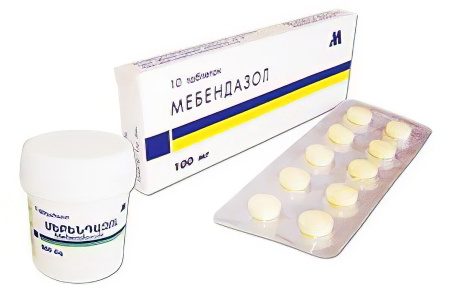
Mebendazole (Vermox). The child is offered 100 mg of the drug once.
Pirantel is prescribed once at a dose of 10 mg/kg of body weight.
Albendazole (Nemozol). The drug is taken once at 400 mg.
Mebendazole and Albendazole are approved for use in children older than 2 years. All family members should be dewormed.
To effectively and quickly rid the intestines of parasites, it is possible to perform cleansing enemas in the evening. For this purpose, a water-soda solution is suitable. Two weeks after the first deworming, the course should be repeated. To make sure that the treatment is effective, the child is checked for enterobiasis three more times.
Drug treatment in combination with the general rules for getting rid of enterobiasis gives a positive result in 95% of cases. However, it is important to eliminate all contact of the child with the source of infection.









